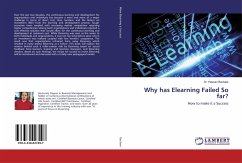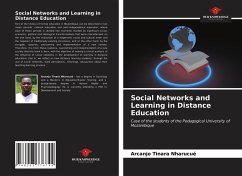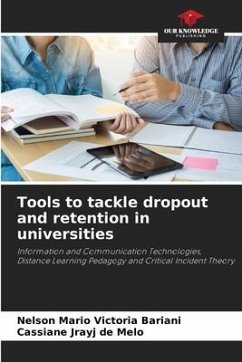
A theory based on facts and knowledge management
Versandkostenfrei!
Versandfertig in 6-10 Tagen
24,99 €
inkl. MwSt.

PAYBACK Punkte
12 °P sammeln!
The high dropout rate in distance learning higher education courses is confirmed and when compared to face-to-face teaching, the impact of resistance to this teaching model can be seen: situational factors - the lack of time the dropouts had to study and the difficulty they felt in understanding and assimilating some of the course subjects; instructional factors - the out-of-class workload required by the course, the time the dropout respondents allocated each week to studying the subjects and the degree of intensity with which they asked questions of the class tutor during lessons; technology...
The high dropout rate in distance learning higher education courses is confirmed and when compared to face-to-face teaching, the impact of resistance to this teaching model can be seen: situational factors - the lack of time the dropouts had to study and the difficulty they felt in understanding and assimilating some of the course subjects; instructional factors - the out-of-class workload required by the course, the time the dropout respondents allocated each week to studying the subjects and the degree of intensity with which they asked questions of the class tutor during lessons; technology-related factors - difficulties in dealing with the virtual environment in the three classes investigated. In this regard, the dropouts found it difficult to use the virtual environment and consequently did little research on the internet. In view of the results found, we recommend better monitoring of the inter- and extra-class academic life of future entrants to this and other distance learning institutions.














